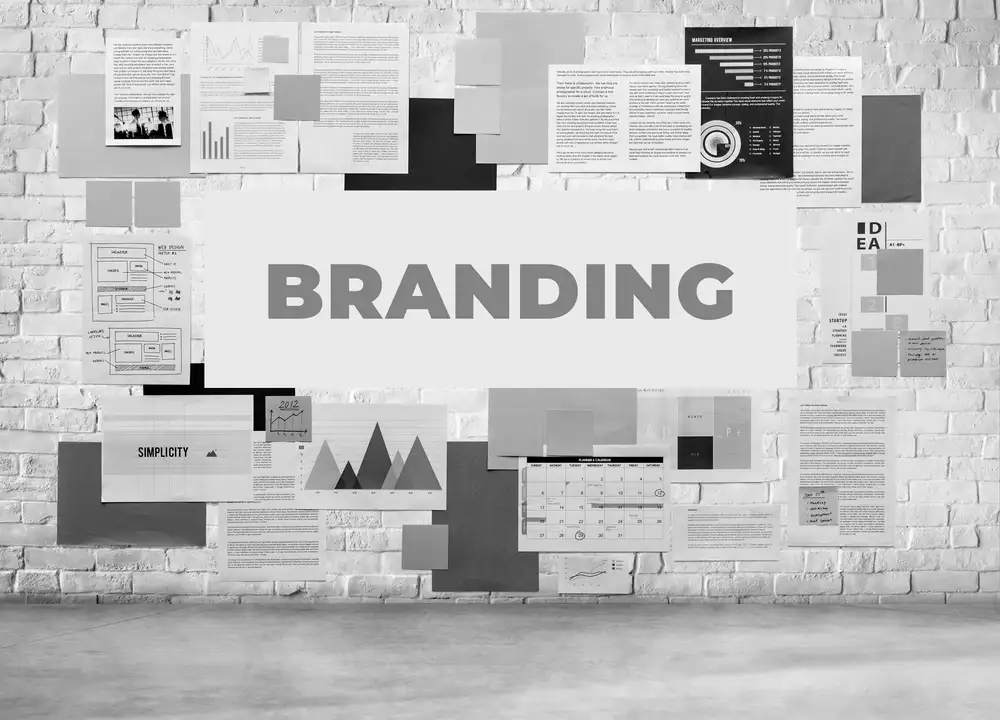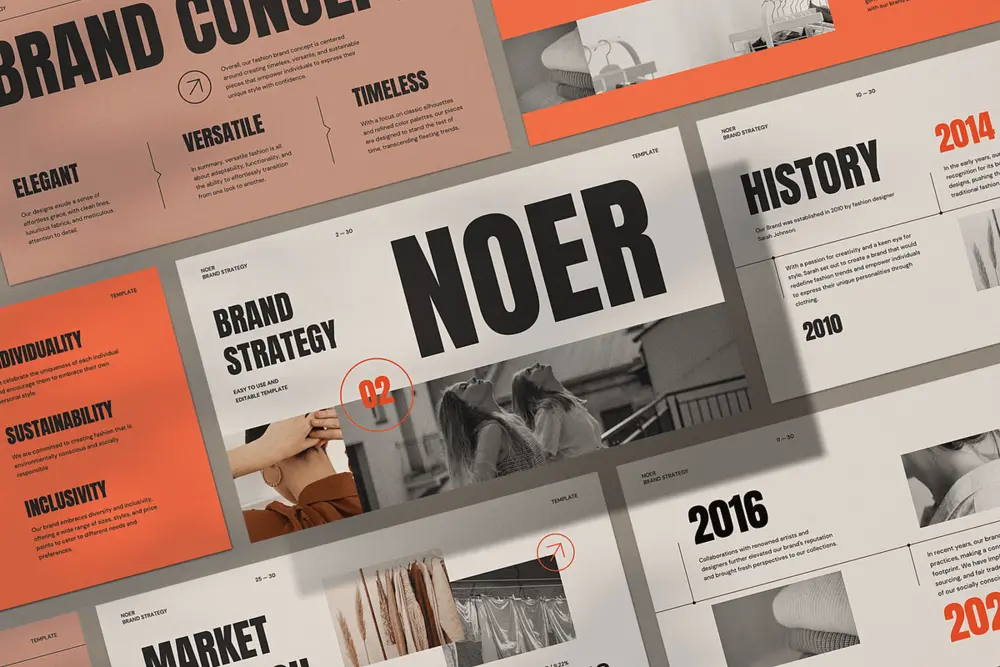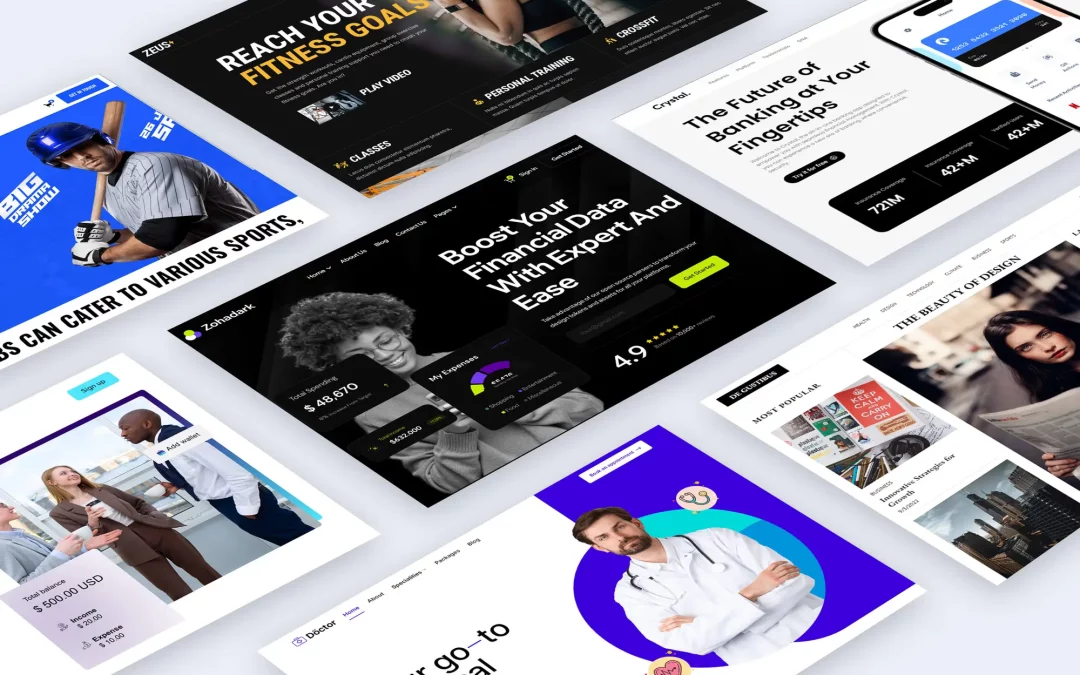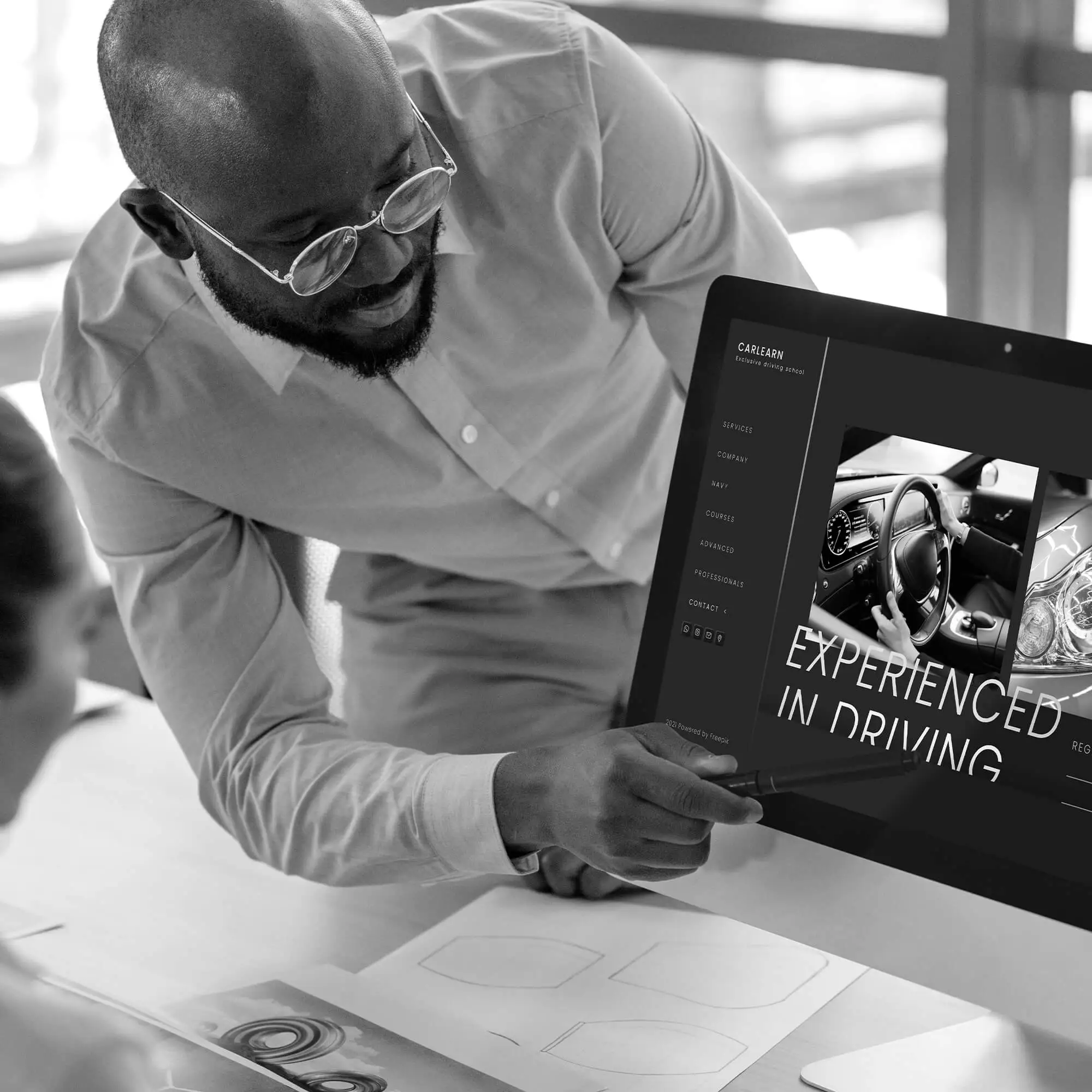The Timeless Power of Branding in 2025
Branding has become more critical than ever in the fast-paced and highly competitive global market. It’s not just a visual representation or a catchy slogan; branding is the heart and soul of a business, defining its identity and shaping its relationship with consumers.
As we approach 2025, brands must not only adapt to changing technologies and consumer preferences but also consistently deliver authenticity and build trust. With the right branding strategies, businesses can stand out in an overcrowded market, foster meaningful connections, and ensure longevity.
This guide is your comprehensive roadmap to understanding the importance of branding, implementing sustainable strategies, and leveraging digital trends that will dominate in 2025. Get ready to transform your brand into a powerhouse of recognition and consumer loyalty.
What Is Branding?
Branding encompasses the visual, emotional, and experiential elements that form the identity of your business or product. It’s about more than appearances—it communicates your values, tells your story, and builds a sustainable connection between your business and your audience.
The Core Components of Branding
-
Visual Identity
Your visuals are the most immediate expression of your brand. They include elements such as your logo, color scheme, typography, and imagery. People often associate these elements with how professional, trustworthy, and memorable your business is.For instance, think about Coca-Cola’s iconic red and white branding. Even without reading the name, you’d probably recognize the brand immediately thanks to this consistent and memorable identity.
-
Value Proposition
A strong brand answers the question, “Why should a customer choose you over competitors?” It expresses your business’s values, ethics, and what you promise to deliver—whether it’s quality, innovation, or reliability. -
Brand Personality
This refers to the emotional and human traits a brand exudes. A playful tech brand like Slack, for example, portrays approachability and fun, while a luxury brand like Rolex emphasizes refinement and elegance. -
Consistency in Communication
Branding is more impactful when messaging is consistent across all platforms, from your Instagram feed to the tone of your customer service replies. Consistency assures your audience that your brand is reliable and trustworthy.
Why Branding Matters in 2025
The importance of branding lies in its ability to create a distinct identity in an increasingly saturated market. Consumers in 2025 will be more discerning, making decisions based less on price alone and more on trust, authenticity, and values. These elements will shape whether customers feel loyal to your brand or seek alternatives.

Case Study Spotlight
Apple stands as a shining example of powerful branding. By emphasizing quality, innovation, and customer experience, Apple has cultivated a loyal customer base worldwide. Its branding message of being user-centric is evident in everything it does—from product design to its advertising campaigns.
For businesses looking to thrive in 2025, branding isn’t just a supplementary asset; it’s foundational to success in the modern competitive arena.
The Evolution of Branding
Branding has come a long way from being about symbols burned into cattle hides or simple hand-painted signs hung outside shops. Today, branding has morphed into a sophisticated, multi-dimensional practice, blending creativity and data-driven strategies.
From Traditional to Digital
-
Past Approaches
Early branding focused heavily on recognition—logos, jingles, and packaging that stood out on store shelves. Companies like Tide and Campbell’s Soup dominated this era with their strong visual branding that immediately caught attention. -
The Rise of Digital Branding
With the onset of the internet and social media, branding expanded from physical products to digital touchpoints. It now includes everything from responsive web design to a brand’s voice on social platforms. -
What the Future Holds
By 2025, branding will increasingly integrate emerging technologies such as artificial intelligence, augmented reality, and blockchain. These tools will allow brands to forge deeper connections by offering hyper-personalized, immersive experiences.
The Role of Technology in Branding’s Evolution
-
Big Data and AI: Businesses now have access to immense amounts of data about consumer behavior and preferences. Artificial intelligence helps sift through this information to tailor advertisements, emails, and product suggestions.
-
Social Commerce: Platforms like Instagram, Facebook, and TikTok have evolved into not just promotional tools but shopping avenues. Branding here involves blending storytelling with subtle calls-to-action.
Digital Branding Trends for 2025
1. Immersive Technologies (AR/VR)
AR and VR have made experiential marketing a reality. For example, furniture giant IKEA’s app lets customers visualize how products will look in their homes before purchasing. Expect more industries to adopt these immersive experiences to create impactful branding moments.
External Resource Recommendation: Augment Your Brand with AR/VR Strategies
2. Personalized Branding Experiences
The digital consumer demands personalization. Whether it’s Netflix tailoring movie recommendations or Spotify curating playlists, the expectation is clear—brands need to create individualized experiences to win loyalty.
Pro Tip: Use A/B testing on brand campaigns to identify what type of messaging or visuals resonate most with your audience.
3. Sustainable and Ethical Practices
With global consumers leaning toward eco-conscious buying habits, brands that champion sustainability are likely to gain favor in 2025. Examples include Patagonia, known for its sustainable manufacturing practices, and Tesla, which revolutionized the electric vehicle market.
Internal Link Opportunity: Read more about sustainability in modern marketing.
Key Elements of Successful Branding Strategies
The Importance of Visual Storytelling
A strong logo and design palette are no longer enough. Modern consumers crave visuals that tell a story. Take Airbnb’s campaign, which focuses on “Belong Anywhere.” Each visual reflects their mission to create global inclusivity.
Leveraging Multi-Platform Communication
Your brand’s voice should remain consistent across touchpoints such as email, social media, and in-person interactions to nurture confidence and recognition across your audience base.
Key Elements of Successful Branding Strategies
Crafting a Cohesive Brand Identity
Strong branding begins with a consistent and recognizable identity. This identity is the face of your business and often determines whether consumers choose to engage with your brand.
-
The Importance of Design Consistency Across Platforms
Your logo, color scheme, typography, and even photography style should remain cohesive across all media. For example:- Nike is instantly recognizable through its swoosh logo, bold typography, and minimalist, empowering visuals.
- Businesses can replicate this by creating a detailed style guide that dictates how branding elements are used across websites, social media, ads, and in-store marketing.
-
Leveraging Iconic Colors and Fonts
Psychology plays a huge role in branding. Studies show that colors and fonts evoke emotions. For instance, blue fosters trust and dependability, making it the choice for brands like Facebook and LinkedIn. Meanwhile, warm tones like red and orange spark energy and confidence, as seen in McDonald’s branding.- A practical tip for businesses is testing various options through focus groups to see what resonates with their target demographic.
-
Expanding Beyond Visuals
Don’t limit identity to brand visuals. Think of sound (e.g., Intel’s familiar jingle), smell (used by hotel chains for memorable experiences), and even touch (such as Apple’s premium packaging). Engaging multiple senses deepens a consumer’s connection to your brand.
Enhancing Your Brand Image
Your brand image is what customers say about you. To influence this positively, brands need strategies to ensure experiences align with expectations.
-
Delivering Positive Customer Experiences
Experience directly correlates with brand perception. For example:- Amazon built its reputation on fast, reliable delivery and hassle-free customer service. Businesses can replicate success by making every customer interaction frictionless and delightful.
- Take advantage of post-interaction surveys to gather insights on how consumers feel about your service and tailor improvements accordingly.
-
Addressing Negative Feedback Proactively
Negative experiences can tarnish brand image if not handled promptly. Turn mistakes into opportunities to build trust:- Respond publicly but respectfully to unsatisfied customers. Offer solutions or compensation where warranted.
- Tools like Google Alerts can help brands monitor online mentions and quickly intervene when a negative review appears.
Creating—and Maintaining—a Strong Brand Promise
A brand promise communicates the unique value your business delivers to its customers consistently.
- Example 1: Starbucks promises a “third place” between home and work, reflected in every aspect of their service, from ambiance to personalized drinks.
- Example 2: Toms Shoes commits to giving back with every purchase, reinforcing their values and encouraging loyal, ethical consumers.
Tips for Developing Your Brand Promise:
- Be specific and relevant to your audience’s needs. Instead of “We value quality,” try promising, “Luxury you can feel in every drink.”
- Revisit this promise annually and match it with emerging trends and shifts in consumer expectations.
Expanding Digital Branding Trends for 2025
The digital world is constantly evolving, and brands need to stay ahead of new tools and trends to remain relevant. Here, we explore further digital branding trends and share how businesses can adopt them effectively.
1. Immersive Branding Through AR and VR
Immersive technologies are redefining how brands connect with audiences by creating engagement strategies that transport users into a virtual or enhanced reality.
Real-Life Examples in Action:
- Pepsi Max Unbelievable Campaign: Using AR, Pepsi shocked and entertained Londoners at a bus stop with scenes of aliens and wildlife breaking into the streets.
- Gucci’s Virtual Try-On: Gucci lets users visualize how shoes look on them in real-time, making online shopping feel as tactile as in-store visits.
Pro Tip for Businesses on a Budget:
- Start small with tools like Snapchat filters or Instagram AR effects. These affordable technologies are increasingly popular and accessible.
2. Data-Driven Personalization Is King
Consumers expect tailored experiences, and data is key to delivering them. By analyzing purchase patterns, browsing behavior, and demographic information, brands can offer highly personalized recommendations.
How Brands Are Excelling at Personalization:
- Netflix creates personalized watchlists based on viewing history, generating loyalty even in highly competitive streaming markets.
- Clothing giants like H&M are now sending tailored promotions based on location-specific weather forecasts.
Action Points for All Businesses:
- Utilize CRM platforms like HubSpot or Salesforce to track audience data effectively.
- Segment your audience into different buyer personas so campaigns feel customized rather than generic.
3. Bigger Focus on Ethical and Sustainable Branding
Today’s buyers don’t just want great products—they want brands that align with their values. Sustainability and ethical practices are a surefire way to gain consumer trust.
Case Study:
- Patagonia’s “Don’t Buy This Jacket” campaign proved that taking a bold environmental stance can build massive brand loyalty. By advocating for conscious consumerism, they grew their audience with ethically-driven millennial buyers.
Steps to Strengthen Ethical Branding:
- Audit your supply chains to eliminate practices that might harm laborers or the environment.
- Publicize sustainable initiatives like recycling programs or renewable energy goals through blogs, social media, and press releases.
Crafting Effective Branding Strategies for 2025
Social Media as the Ultimate Branding Tool
Social media gives brands unfettered access to billions of potential customers. However, it’s not just about being present—it’s about actively engaging your audience.
Maximizing Social Presence:
- Diversify your strategies. Use TikTok for quick, viral storytelling, Instagram for high-quality visuals, and LinkedIn for professional engagement.
- Run polls, giveaways, and behind-the-scenes content to create two-way communication instead of static promotion.
Leveraging Video Dominance:
- 82% of all internet traffic will soon come from videos. Investing in short-form video storytelling on platforms like YouTube Shorts or Instagram Reels can turn engagement into profits fast.
Internal and External Links as SEO Assets
Like a spider web, backlinks are integral for bolstering credibility in SEO.
- Create partnerships with reputable blogging resources to generate valuable DoFollow links, for example, linking to industry reports, like Statista Branding Reports 2025.
Internally, align this post with related in-house topics like how emotional marketing trends align with sustainability.
Case Studies of Successful Branding in Action
Coca-Cola’s Consistency:
Why is Coca-Cola still a household name after 130 years? Because of their ability to constantly evolve their message while remaining loyal to their ethos of togetherness and emotions. Holidays wouldn’t feel the same without their campaigns, like the iconic Santa imagery or the “Share a Coke” hashtags.
Takeaway Tip for Small Brands:
Focus on a consistent, central message so customers associate you with clear benefits, just as Coke owns positivity and community-driven experiences.
Local Brands Going Global:
Regional brands that scaled using culturally relevant branding provide inspiration. Korean skincare leaders like Laneige incorporated ancient rituals into innovative modern skincare treatments—bridging the gap between traditional roots and global consumerism.
Your Road to Branding Success in 2025
No matter your industry, branding is now the most powerful vehicle for connecting you with the consumer of tomorrow. Use the tools, trends, and examples outlined here to positively evolve with the shifting tides of digital marketing while staying true to the heart of your brand values.
Internal Call-to-Action:
For even more advanced branding strategies, download our free guide on mastering cross-platform brand consistency.
Make your brand not just another product in the market but a memorable experience—one that inspires, engages, and drives loyalty this 2025!






0 Comments